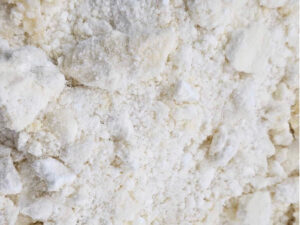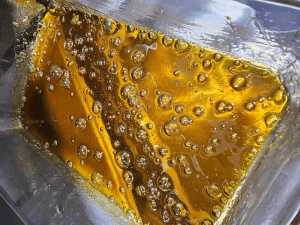
Streamline Your Workflow with Advanced BHO Extraction Equipment
Streamline your processes with BHO extraction equipment featured in ‘Streamline Your Workflow with Advanced BHO Extraction Equipment.
Botanical extraction uses solvents to extract beneficial compounds from plant material for use in an array of concentrated botanical products. The future of botanical extraction will see a greater emphasis on good manufacturing practices, automation, and energy efficiency as federal legalization grows closer to a reality.
The botanical extract industry isn’t just expanding, it’s maturing. And as any industry matures, it begins to make inroads into new technological advancements, advancements that will expand and mature the industry even further. That’s essentially where the botanical extraction industry finds itself today.
Plant extracts and extraction methods have grown more sophisticated in recent years, with high-quality plant material being transformed into an array of botanical end products, including butane hash oil, live resin, budder, shatter, wax, and more. With high-terpene, full-spectrum botanical products available on a large scale, consumers are clamoring for the next big thing.
To grab consumer attention, botanical extractors and CEOs of extraction companies need to be ready to meet the future head on.
In this blog, we’ll explore the future of extraction, from federal legalization and the latest in good manufacturing practices (GMP) to automation, energy use, and what Illuminated Extractors see as a market shift away from raw flower.
But first, a brief history of extraction.
There’s a long history of using botanical extracts to treat an array of maladies across the world. Natural extracts—from animal, mineral, and botanical origins—have been used as “active ingredients” in treatments for as long as humans have had symptoms in need of remedy. To take it way back to ancient Egypt, those progenitors of extraction employed butter, oil, honey, beeswax, lemon juice, and even lead to create recipes for both medicine and cosmetics.
As for the specific origins of botanical extraction, ancient cultures such as India, Persia, and China took advantage of various forms of plant extract for both medicinal and religious purposes. Fast-forward to the 18th century, extracts were being used by doctors across Europe and even in the fledgling American colonies.
Extracts stayed mostly underground and under the radar throughout the early 20th century, until modern butane hash oil (BHO) bubbled up to the surface in the 1970s.
In 1999, everything changed. The online library known as Erowid published “Hash Honey Oil Technique,” which described an “open-blasting” extraction method using hydrocarbons such as propane and butane to pull cannabinoids and terpenes from raw plant material. Over the following decade, open-blasting led to far safer and more reliable closed-loop extraction systems, which contain and recycle hydrocarbon solvents.
As time went on, more and more states began loosening botanical extraction laws, allowing manufacturers to experiment with a variety of large-scale extraction styles—hydrocarbon, ethanol, CO2—to create an even wider array of botanical products, including wax, budder, sap, sauce, diamonds, and so much more.
The future of botanical extraction? Suffice to say, it’s big. According to a recent report published by Grand View Research, Inc, the global botanical extract market size is expected to be valued at $28.5 billion by 2027. Another report demonstrated that extract-derived products are expected to take off most dramatically in the near future. This includes “oils, tinctures, concentrate, capsules, topical solutions such as slaves, lip balms, lotions, and edibles such as baked goods, coffee, chocolates, gums, and candies.”
While dried flower is currently the most sought-after botanical product, research shows that its popularity is waning in favor of extracts. Studies show that sales of flower rose less than sales of all other botanical products in California, Colorado, Michigan, Nevada, Oregon, and Washington.
High-quality, rapid release edibles derived from extracted concentrates are perhaps most popular. Research firm BDSA recently shared a study with Forbes, stating that “In 2020, edibles accounted for 12 percent of U.S. adult-use [botanical] sales ($2.2 billion); by 2026 edibles’ share of sales is forecasted to increase slightly to 14 percent ($6.7 billion). While in Colorado and California, gummies make up more than 95 percent of edible sales overall.”
All signs point to dried flower waning in popularity and extract-derived products growing by leaps and bounds. But consumers don’t just want a wide variety of products, they want high-quality products delivered by lifestyle brands.
As federal legalization gets closer to becoming a reality, the future of extraction will only grow brighter. In the following sections, we’ll break down the leading influences of the future of the botanical industry.
It’s difficult to determine when federal legalization will finally land. To say the least, it’s a fluid process that’s seen many starts and stops over the last decade. How close we are to legalization depends largely on the powers that be, with one side of the aisle clearly more in favor of legalization than the other.
While there’s currently no law coming down the pipe that will immediately enact federal legalization, extraction companies should still prepare their business operations for that eventuality. The last thing you want is to be caught unprepared when federal legalization passes and the market explodes into uncharted regions.
Here are some specific areas you can improve before botanical extraction goes national.
The future of botanical extraction will push the industry even further into the mainstream consumer market spotlight, and more popularity means more eyes watching your every move. That is precisely why extraction companies must turn their attention to current good manufacturing practices (cGMPs or GMPs).
Created by the Federal Food, Drug, and Cosmetic Act (FD&C) under the authority of the Food and Drug Administration (FDA), GMPs constitute the most sought-after standards in any consumer goods manufacturing industry. The act that created GMPs outlines a set of standards that apply to the manufacturing of any consumer-facing product. This includes foods, beverages, dietary supplements, prescription drugs, medical devices, and cosmetics.
These standards will become increasingly relevant as more marketplaces welcome botanical extraction products. Extraction companies will be required to develop and implement processes that ensure extracts are manufactured consistently and reliably, with predictable potencies and purity levels.
With possible federal legalization pointing toward a definite need for good manufacturing practices, extraction companies will need to lean on automation in all extraction efforts. After all, in order to realize profits in the future of extraction, companies need to work smarter—and there’s nothing smarter than automated technology.
Automation in extraction typically refers to automated process control. Older extraction equipment features manual controls that are driven by a single operator. That operator controls all parameters of the process, including solvent holding, chilling, agitation, discharge, solvent removal, and filtration, as well as various valves, pumps and controls.
Controlling all of that manually isn’t just tedious; since product inconsistencies and human error are all-but inevitable, it’s a recipe for disaster.
Automation has the power to change that and advance extraction even further into the future. A fully automated extraction system:
Automation also increases energy efficiency, a major need in the extraction industry and a topic that deserves its own section.
Whether it’s a system that uses hydrocarbons, ethanol, or CO2, a fully operational botanical extraction system consumes a lot of energy. This makes energy one of the most prohibitive costs for any extract manufacturing facility. Not only that, the amount of energy used has become a point of contention with consumers concerned about the environmental impact of botanical extraction.
As we move into the future of the extraction industry, more and more consumers will expect companies to perform their extractions in a responsible manner. This means paying careful attention to energy usage and the carbon footprint you leave behind with each extraction.
To reduce power consumption and future-proof your extraction company, consider
This industry has come a long way from its early days in the quasi-legal shadows of botanical products, but the future holds incredible possibilities for companies on the verge of breaking through to the mainstream marketplace. When you partner with Illuminated Extractors, you expand those possibilities even further, adding expertise and industry know-how to your already budding enthusiasm for the industry.

Streamline your processes with BHO extraction equipment featured in ‘Streamline Your Workflow with Advanced BHO Extraction Equipment.

Illuminated Extractors Cost Savings

Illuminated Extractors Cost Savings

Illuminated Extractors Cost Savings

Illuminated Extractors Cost Savings

Illuminated Extractors Cost Savings
It’s time to start your extraction journey with Illuminated Extractors.
Certified in all 50 States
All Illuminated Extractors extraction models have received Technical Report Certification authored by Pressure Safety Inspectors (PSI). All models have been peer-reviewed for Safety and compliance in all 50 states. Please contact us for more information about certifications for your local AHJ.
Illuminated Extractors LTD – All Rights Reserved. Copyright © 2017-2024. Privacy Policy | Terms & Conditions